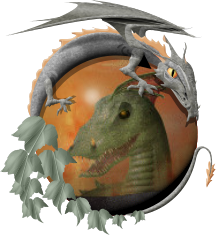- Cities and buildings
- Fields, plains and deserts
- Forests
- Hills and mountains
- Islands and promontories
- Lands, realms and regions
- Rivers and lakes
- Seas and oceans


 |
||||||
|


Which personality type are you?
Take the Free mydiscprofile Personality Test to discover your core personality and your ideal job.   Which personality type are you? |
|
Dates
Presumably (though not certainly) bred in Angband with the other fire-drakes in the late First Age; slain III 2941
Location
Emerged from the north to descend on Erebor, the Lonely Mountain
Race
Division
Settlements
Settled in the Great Hall of Thráin within Erebor
Pronunciation
smow'g ('ow' as in 'now')
Meaning
'squeezed through a hole'1
Titles
Chiefest and Greatest of Calamities, Dragon of Erebor, The Dreadful, The Golden, The Impenetrable, Your Magnificence, The Mighty, Worm of Dread
|
SmaugThe Dragon of Erebor"My armour is like tenfold shields, my teeth are swords, my claws spears, the shock of my tail a thunderbolt, my wings a hurricane, and my breath death!"
Smaug's description of himself
from The Hobbit 12 Inside Information Smaug was the last of the great fire-drakes,2 and said to be the greatest Dragon of his time. At some time during the twenty-eighth century of the Third Age, he came to hear of the immense wealth held by the Dwarves of Erebor. In the year III 2770 he flew from the North and descended in fire on the Lonely Mountain, destroying the Dwarf-kingdom and the nearby township of Dale. Gathering together the treasures of the Dwarves, he formed himself an immense bed of gold and jewels and settled within the ruined halls of Erebor. Slowly the years and decades passed, until the people of the Long Lake to the south had almost forgotten the Dragon of Erebor and Smaug imagined himself unassailable. Then, one day in the October of III 2941, one hundred and seventy-one years after his arrival in Erebor, Smaug awoke to find his treasure disturbed. Of all that mountain of wealth, he noticed with rage that a single two-handled cup had been taken. He could not have imagined that the loss of that cup signalled his own imminent downfall; Thorin, the heir of the King under the Mountain that Smaug had driven from his halls those many years before, had returned to reclaim his kingdom. With him came Bilbo Baggins, a Hobbit with a magical Ring with which he had invisibly removed that single cup from Smaug's treasure. In his anger, the Dragon flew from his halls, scorching and breaking the mountainside. Thorin, Bilbo and their companions were sealed in a hidden tunnel, and at last the frustrated Smaug gave up his attack on the mountain. Realizing that they must have had help from Lake-town to the south, he set out to punish the Men of the Lake instead. That was to be Smaug's last flight. Bilbo had managed to discover an open patch in the Dragon's armour, and word of this had been carried to Lake-town. In particular, it reached the heir of another of Smaug's victims: Bard, the descendant of Girion of Dale. Bard shot Smaug with an arrow, and though Lake-town was devastated in his attack and fall, the Dragon was defeated. In years to come, beneath the waters of the lake his mighty bones could be seen, and the jewels that had lined his hide: the last remains of the greatest Dragon of his age. Notes
See also...Arkenstone, Balbo Baggins, Balin, Bard I, Bardings, Barrel-rider, Battle of Five Armies, Berylla Boffin, Bilbo Baggins, Black Arrow, Bladorthin, Bofur, Borin, Brand, Carc, [See the full list...] For acknowledgements and references, see the Disclaimer & Bibliography page. Original content © copyright Mark Fisher 1998, 2000, 2002. All rights reserved. For conditions of reuse, see the Site FAQ. Website services kindly sponsored by Discus from Axiom Software Ltd.Discover how DISC fits together with our FREE and comprehensive Complete Introduction to DISC. |